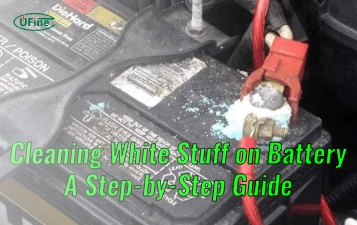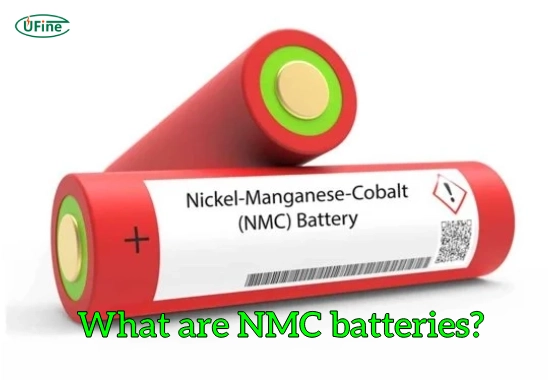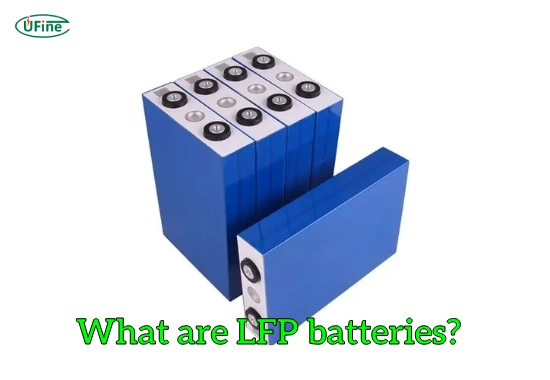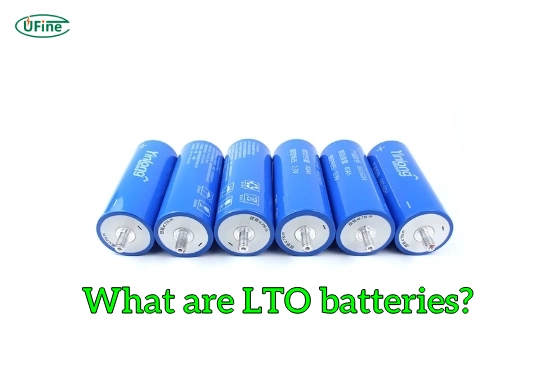In the world of battery technology, NMC, LFP, and LTO batteries are three prominent types that cater to various applications, from electric vehicles to renewable energy storage systems. Understanding the differences among these battery types is essential for consumers and industries looking to make informed choices. This guide delves into the unique characteristics of each battery chemistry before providing a comprehensive comparison that highlights their strengths and weaknesses.
Part 1. What are NMC batteries?
NMC batteries are a type of lithium-ion battery commonly used in electric vehicles (EVs) due to their high energy density and power output. With an energy density range of 150-250 Wh/kg, some advanced NMC batteries can exceed 300 Wh/kg under optimal conditions.
Key Characteristics of NMC Batteries
- Energy Density: NMC batteries offer high energy density, making them suitable for long-range applications.
- Power Output: They provide excellent power output, essential for electric vehicles (EVs) and other high-drain applications.
- Thermal Stability: The combination of metals in the cathode enhances thermal stability, reducing the risk of overheating.
Applications of NMC Batteries
- Electric vehicles
- Energy storage systems
- Portable electronics
Part 2. What are LFP batteries?
LFP batteries, known for their cost-effectiveness and long cycle life, are often used in renewable energy storage systems. They can typically endure up to 2,000 charge-discharge cycles, making them ideal for applications requiring frequent use.
Key Characteristics of LFP Batteries
- Safety: LFP batteries are renowned for their thermal stability and lower risk of thermal runaway than other lithium-ion batteries.
- Cycle Life: They have a long cycle life, often exceeding 2000 charge-discharge cycles.
- Cost-Effectiveness: The materials used in LFP batteries are more abundant and less expensive than those in NMC batteries.
Applications of LFP Batteries
- Renewable energy storage systems
- Electric buses
- Power tools
Part 3. What are LTO batteries?
LTO batteries offer ultra-fast charging capabilities, taking as little as 10 minutes to charge fully. With a lifespan of over 10,000 cycles, LTO batteries are perfect for applications requiring rapid charging and long-term reliability.
Key Characteristics of LTO Batteries
- Ultra-Fast Charging: LTO batteries can be charged in minutes, making them ideal for applications requiring quick turnaround times.
- Long Cycle Life: They can endure over 10,000 charge-discharge cycles without significant degradation.
- Wide Temperature Range: LTO batteries perform well in extreme hot and cold temperatures.
Applications of LTO Batteries
- Public transportation systems
- Grid energy storage
- Military equipment
Part 4. Comparing NMC, LFP, and LTO batteries
When comparing NMC, LFP, and LTO batteries, several factors include energy, density, cycle life, safety features, cost considerations, environmental impact, and specific applications. Here’s a deeper look at how these three battery types stack up against each other:
1. Energy Density: In-Depth Comparison
- NMC Batteries: NMC batteries have the highest energy density, typically ranging from 150 to 250 Wh/kg, making them ideal for long-range electric vehicles. Advanced NMC cells can exceed 300 Wh/kg in some cases, allowing for better performance in electric vehicles.
- LFP Batteries: LFP batteries provide moderate energy density (90-160 Wh/kg), which is sufficient for applications like energy storage and electric buses. The energy density of high-performance LFP batteries can go up to 205 Wh/kg.
- LTO Batteries: While LTO batteries have the lowest energy density, typically 60 to 120 Wh/kg, they make up for this with their extremely fast charging capability and over 10,000 cycles of life, offering long-term durability and excellent performance in demanding environments.
2. Lifespan and Cycle Life
Manufacturers often measure a battery’s lifespan in charge cycles, which include one complete charge and discharge cycle.
- NMC Batteries: Typically last around 1,000 to 1,500 cycles before a significant capacity loss occurs.
- LFP Batteries: Known for their longevity, they can last up to 2,000 cycles under optimal conditions.
- LTO Batteries: These batteries lead the pack with lifespans exceeding 5,000 cycles due to their unique chemistry that minimizes degradation.
3. Charging Speed
Charging speed is essential for applications requiring quick turnaround times.
- NMC Batteries: Moderate charging speeds typically take a few hours, depending on the charger used.
- LFP Batteries: Slower charging times compared to NMC but still reasonable for many applications.
- LTO Batteries: Exceptional charging capabilities; can be charged in as little as 10 minutes due to their high conductivity.
4. Safety Considerations
Safety is paramount when it comes to battery technology. Each chemistry has its safety profile:
- NMC Batteries: Generally safe but prone to thermal runaway if damaged or improperly handled.
- LFP Batteries: Known for excellent thermal stability; less likely to catch fire or explode than other chemistries.
- LTO Batteries: The safest option among the three; highly resistant to thermal runaway and can operate in extreme temperatures.
5. Cost Analysis
Cost plays a significant role in the adoption of battery technologies across industries.
- NMC Batteries: Current costs are approximately $100-$130 per kWh for battery packs, with higher costs for specialized applications.
- LFP Batteries: Prices currently range from $70 to $100 per kWh, with projections indicating potential drops to $36-$56 per kWh by 2025.
- LTO Batteries: Costs are generally between $150 and $200 per kWh, influenced by specialized materials and manufacturing processes.
6. Environmental Impact
The environmental footprint of battery production and disposal is becoming increasingly important:
- NMC Batteries: Mining cobalt raises ethical concerns; however, advancements are being made in recycling technologies.
- LFP Batteries: Considered more environmentally friendly due to non-toxic materials; easier to recycle at end-of-life.
- LTO Batteries: Although they use less common materials like titanium, they have a long lifespan, which can mitigate environmental impact over time.
Comparison Table
| Feature | NMC Batteries | LFP Batteries | LTO Batteries |
|---|---|---|---|
| Energy Density | 150 – 250 Wh/kg (up to 300 Wh/kg) | 90 – 160 Wh/kg (up to 205 Wh/kg) | 60 – 120 Wh/kg |
| Cycle Life | 1,000 – 1,500 cycles | Up to 2,000 cycles | Exceeds 5,000 cycles |
| Charging Speed | Moderate (1-2 hours) | Slower (3-4 hours) | Exceptional (under 30 minutes) |
| Safety | Moderate risk of thermal runaway | High safety, less prone to fire/explosion | Very high safety, resistant to thermal runaway |
| Cost | Approximately $100-$130/kWh for packs; higher for specialized applications | Currently around $70-$100/kWh; projected to drop to $36-$56/kWh by 2025 | Approximately $150-$200/kWh due to specialized materials |
| Environmental Impact | Ethical concerns due to cobalt mining | More environmentally friendly, easier to recycle | Long lifespan mitigates environmental impact |
| Applications | Electric vehicles | Renewable energy storage | Fast-charging stations |
Artikel Terkait: LFP vs. NMC Battery: What is the Difference?
Artikel Terkait: LTO Battery Vs. NMC Battery: A Detailed Comparison
Part 5. FAQs
-
What is the main difference between NMC and LFP batteries?
NMC batteries offer higher energy density and are suitable for electric vehicles. In contrast, LFP batteries prioritize safety and longevity at a lower cost. -
Are LTO batteries worth the investment?
Yes, particularly for applications requiring rapid charging and long cycle life; however, they come at a higher upfront cost. -
How do I choose between these battery types?
When selecting a battery type, consider your specific needs regarding energy density, lifespan, safety requirements, and budget constraints. -
Can these batteries be recycled?
Yes, all three types can be recycled; however, the processes vary in complexity and environmental impact based on the materials used. -
What future developments should I expect in battery technology?
Expect advancements focused on sustainability, improved performance metrics like faster charging times, and reduced reliance on scarce materials like cobalt.
Related Tags:
More Articles

White Stuff on Battery Terminals: A Step-by-Step Cleaning and Maintenance Guide
White stuff on battery terminals is corrosion. Learn how to clean it safely, prevent damage, and keep your battery running strong with simple steps.
Understanding How Glass Mat Batteries Work: Technology, Benefits, and Limitations
Glass mat batteries power cars, RVs, and solar systems. Learn how they work, their benefits, and what to consider before choosing one.
A Buyer’s Guide for AA Size Lithium Battery
Discover the power of AA size lithium batteries—types, voltage, capacity, and more! Learn how to choose the best one for your needs. Read now!
Li-Ion Battery Prices – Where to Buy Cheap & Safe
Discover li-ion cell prices, key market factors, and how to find affordable custom batteries from top suppliers like Ufine Battery.
How Long Does a 2200mAh Battery Last?
Discover everything about 2200mAh batteries—types, charging time, lifespan, and whether it’s enough for your device.






